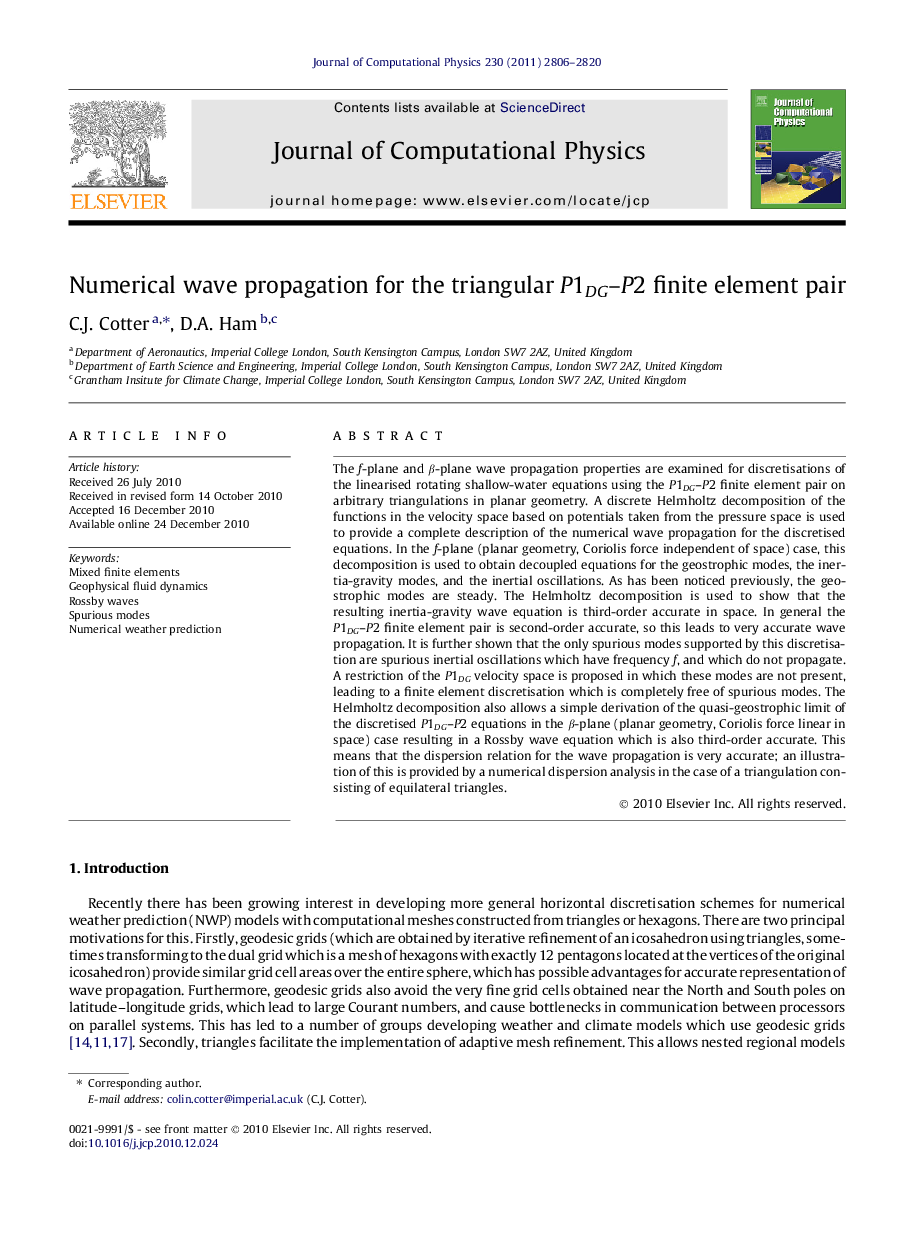| کد مقاله | کد نشریه | سال انتشار | مقاله انگلیسی | نسخه تمام متن |
|---|---|---|---|---|
| 520878 | 867740 | 2011 | 15 صفحه PDF | دانلود رایگان |

The f-plane and β-plane wave propagation properties are examined for discretisations of the linearised rotating shallow-water equations using the P1DG–P2 finite element pair on arbitrary triangulations in planar geometry. A discrete Helmholtz decomposition of the functions in the velocity space based on potentials taken from the pressure space is used to provide a complete description of the numerical wave propagation for the discretised equations. In the f-plane (planar geometry, Coriolis force independent of space) case, this decomposition is used to obtain decoupled equations for the geostrophic modes, the inertia-gravity modes, and the inertial oscillations. As has been noticed previously, the geostrophic modes are steady. The Helmholtz decomposition is used to show that the resulting inertia-gravity wave equation is third-order accurate in space. In general the P1DG–P2 finite element pair is second-order accurate, so this leads to very accurate wave propagation. It is further shown that the only spurious modes supported by this discretisation are spurious inertial oscillations which have frequency f, and which do not propagate. A restriction of the P1DG velocity space is proposed in which these modes are not present, leading to a finite element discretisation which is completely free of spurious modes. The Helmholtz decomposition also allows a simple derivation of the quasi-geostrophic limit of the discretised P1DG–P2 equations in the β-plane (planar geometry, Coriolis force linear in space) case resulting in a Rossby wave equation which is also third-order accurate. This means that the dispersion relation for the wave propagation is very accurate; an illustration of this is provided by a numerical dispersion analysis in the case of a triangulation consisting of equilateral triangles.
Journal: Journal of Computational Physics - Volume 230, Issue 8, 20 April 2011, Pages 2806–2820